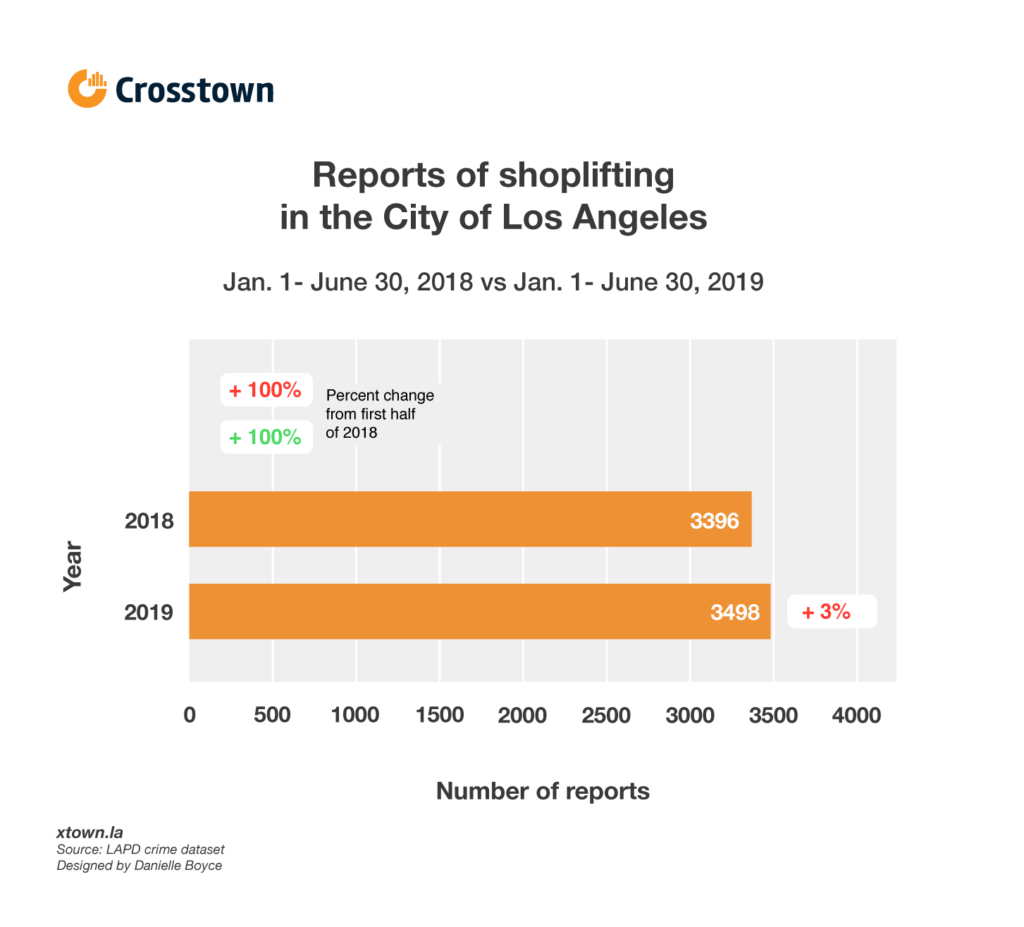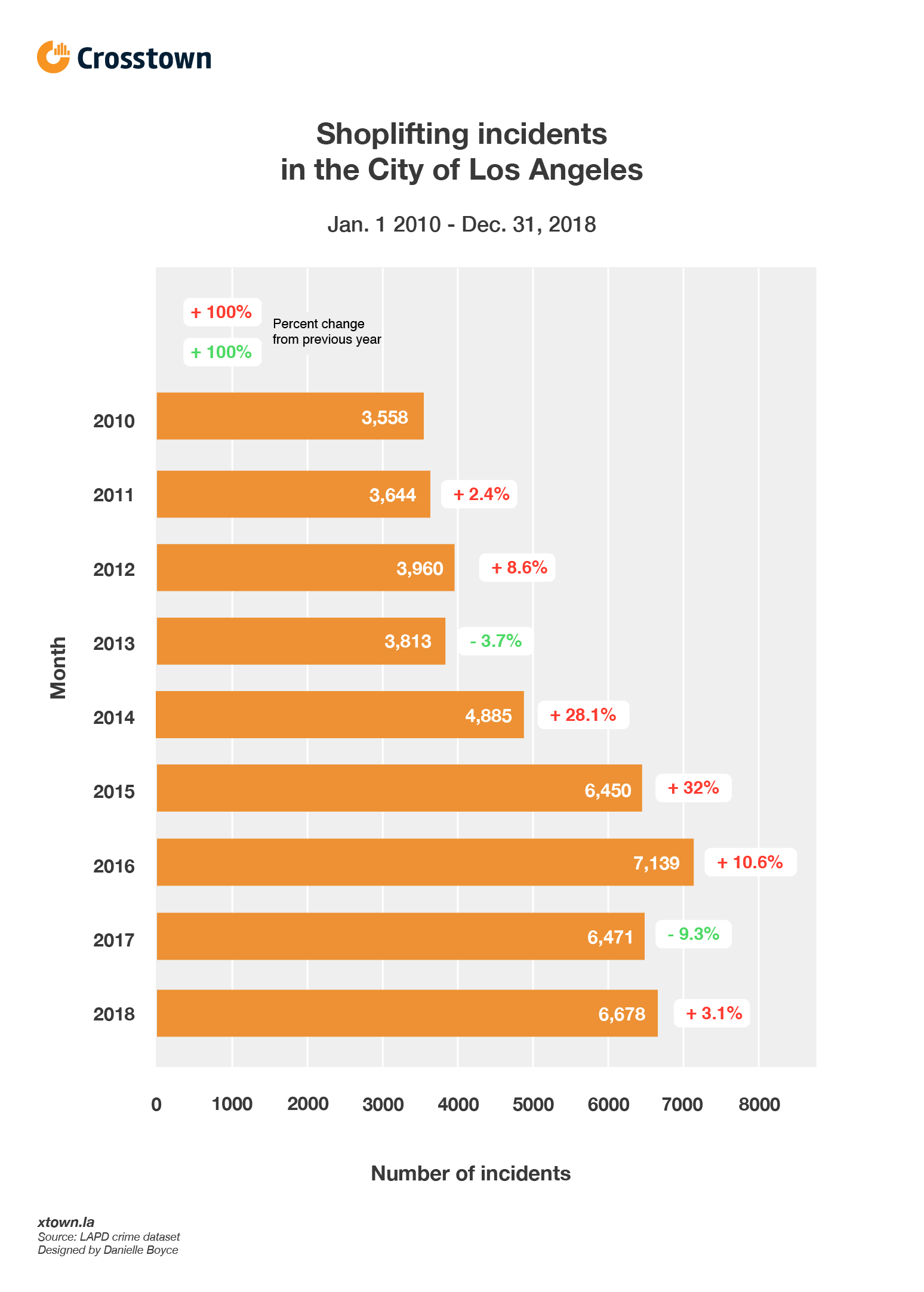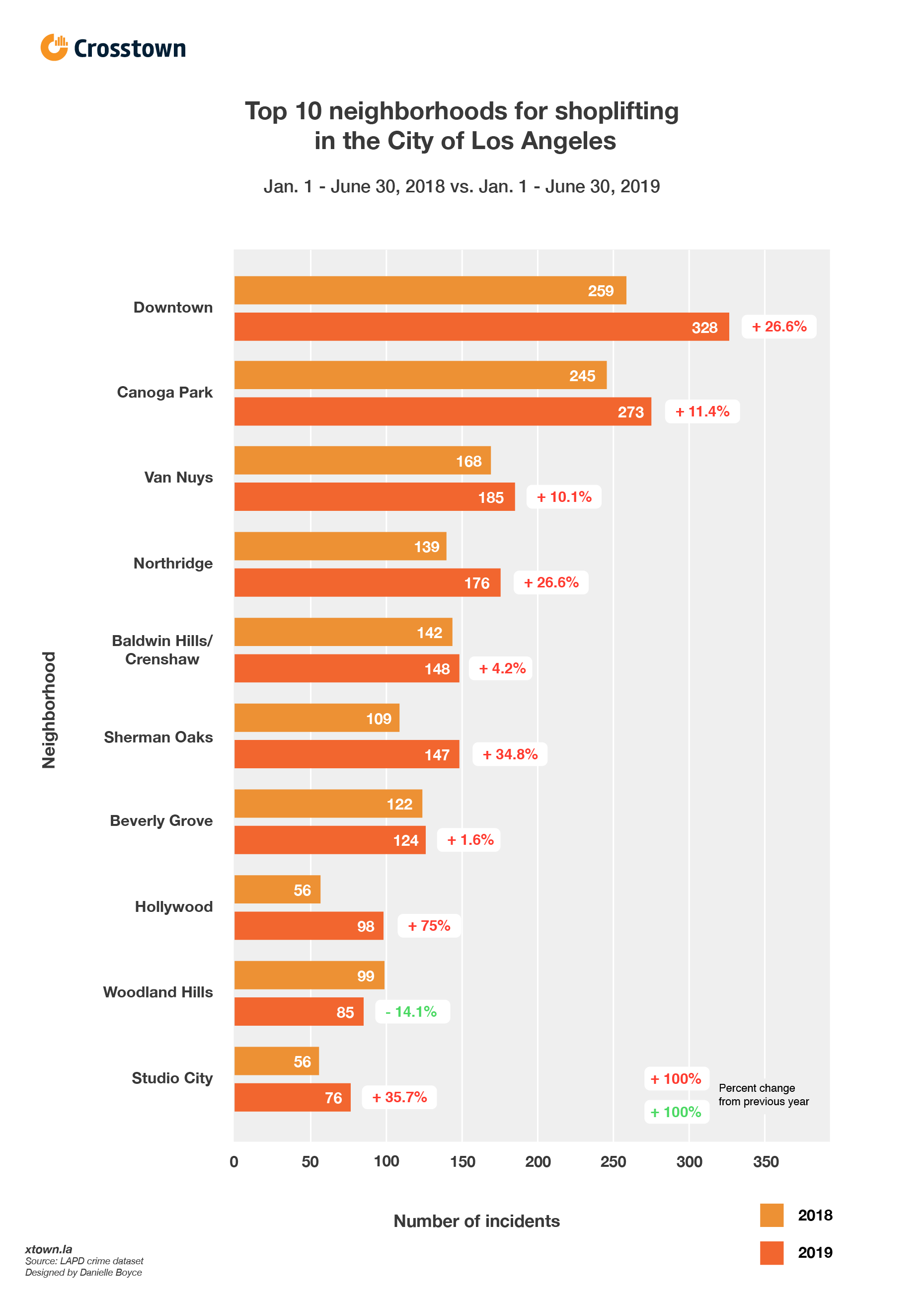Why shoplifting is such a problem in LA

Shoplifting is on the rise in the City of Los Angeles.
There was a 3% increase in reported shoplifting incidents for the first six months of 2019, compared to the same time last year, according to publicly available LAPD data.

Reports of shoplifting in the city have also risen steadily overall for the past nine years. The largest spikes in the crime came in 2014 and 2015, when reports of shoplifting increased nearly 21% and 32%, respectively, over the previous years. The highest total came in 2016, but 2017 saw a dip of 9.3%. The totals inched back up again last year.

Wonder why all the razors and other items are locked behind thick windows in a Walgreens or Target? They’re easy to steal and resell.
Beauty supply, clothing and department stores are hit the hardest by shoplifting, according to LAPD’s publicly available data. But these are not always one-off incidents of petty theft.
Retailers report having massive problems with organized retail crime.
This includes companies such as The Home Depot, a nationwide home improvement retailer. Its Canoga Park location showed up several times in LAPD data as the premise for a shoplifting crime in the first six months of 2019.
Christina Cornell, corporate communications spokesperson for the national company, said the mentions are likely due to organized retail crime.
“We have a team of investigators,” she said. “All they do all day is look at this.”
There is plenty to keep them busy.
In 2018, the City of Los Angeles was No. 2 after New York City on the National Retail Federation’s list of top cities for organized retail crime. Return fraud, the crime of stealing items to return for cash or store credit, was a major factor in retail shrinkage. About 77% of retailers told the NRF they experienced return fraud, according to a 2018 survey.
“Thieves have mastered the art of stealing things that are easy to grab and reselling them through online marketplaces like eBay and Craigslist,” Cornell said. “It wouldn’t be a patio set. We’re talking thousands of dollars worth of power tools.”
Craigslist’s terms of use ban the sale of stolen property and any good, service or content that violates the law. But there’s no way a buyer can know for sure the power drill they purchased was stolen.
A quick search of Craigslist reveals just how much power tools can fetch online. In one posting, a collection of assorted power tools was listed by a seller looking to fetch $750. In another listing, power tools were listed for $800.
At the beginning of this year, a two-year pilot statute went into effect in California that slaps harsher penalties for anyone charged with organized retail crime. Under the statute, people charged with multiple instances of shoplifting can face felony charges instead of a misdemeanor. This new addition to the penal code does not just target those who coordinate and organize the crime; if you receive stolen goods, you can also be charged with organized retail crime.
“The organized retail crime statute makes it easier for members of these rings to be tried in one courtroom, in one jurisdiction,” said Det. Steven Franssen, an investigator in the LAPD’s Commercial Crimes Division.
Prop. 47, a 2014 ballot initiative meant to stop jailing people who commit petty crime often tied to drug abuse or mental health issues, reduced some theft crimes to misdemeanors. Some in law enforcement believe that organized retail crime rings feel emboldened because of decreased penalties for committing theft under Prop 47. That sentiment was echoed by the City of Glendale’s Chief of Police in an interview with Crosstown earlier this year.
Neighborhoods with the biggest increases in reports of shoplifting during the first six months of 2019 compared with the same period last year were Studio City and Sherman Oaks. Downtown and Northridge tied for third largest percentage increases. Glassell Park saw the biggest decrease in reports of shoplifting.

Legislators drafted the bill with the intent of curtailing organized retail crime. Individuals charged with theft can look like one-off incidents, a minor lapse in judgement leading to softer punishments. Members of organized retail crime previously benefited as long as they keep their stolen items under $950, despite hitting up multiple retail stores.
“The new statute streamlined the court system so someone accused of shoplifting isn’t in six different courtrooms, they’re in one,” said Franssen. Asked if the pilot program will curtail the efforts of organized retail crime rings, he replied, “Hopefully.”
* An earlier version of this article incorrectly associated some of Det. Franssen’s remarks with Prob. 47.
How we did it: We examined LAPD publicly available data on reports of shoplifting for the first half of 2019, which revealed an increase in incidents from the same time period last year. For neighborhood boundaries, we rely on the borders defined by the Los Angeles Times. Learn more about our data here.
LAPD data only reflect crimes that are reported to the department, not how many crimes actually occurred. In making our calculations, we rely on the data the LAPD makes publicly available. On occasion, LAPD may update past crime reports with new information, or recategorize past reports. Those revised reports do not always automatically become part of the public database.
Want to know how your neighborhood fares? Or simply just interested in our data? Email us at askus@xtown.la.






